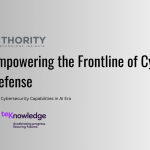Google has initiated the first phase of its third-party cookie deprecation process. It means marketers should now come to terms with the changing landscape and emphasize building their first-party data strategies.
Our recent research sheds light on the issue, revealing that half of UK and US marketers acknowledge the importance of prioritizing better use of first-party data in the coming year. Marketers stand at a crossroads, desperately seeking optimal solutions to harness first-party data and engage audiences in the cookieless world.
In 2024, marketers must embrace innovative tools to ensure they can continue to effectively target consumers without compromising on their advertising efforts due to the loss of third-party cookies.
Top AI ML News: Intel Builds The PC Industry’s Most Robust AI PC Toolchain
Established tools
Over the last few years, several methods have been introduced as tools for helping advertisers navigate the cookieless ecosystem. Among these, both contextual targeting and external identifiers (EIDs) have gained prominence as leading answers to the challenges facing marketers.
Contextual targeting, which is privacy-friendly at its core, predates the existence of cookies on the web. Thanks to advancements in technology, particularly within artificial intelligence (AI), contextual targeting has seen a resurgence. Natural language processing, a form of AI, means that ads can be better targeted based on the content of a page, analysing the meanings behind words rather than solely targeting keywords.
On the other hand, EIDs are a lot more similar to third-party cookies and have faced plenty of criticism as a result. EIDs enable consumers to once again be tracked across sites by converting their personally identifiable information into deterministic identifiers, or signals such as IP addresses into probabilistic identifiers.
Regulatory authorities express reservations about jeopardizing consumer privacy through the implementation of another tool, while industry experts question the scalability of EIDs. Consequently, there is plenty of resistance against the method.
Recommended: Aligned’s AI Co-pilot Helps B2B Sales Teams Close Deals Even in Their Sleep
Emerging tools in digital advertising
Where advertisers may see the most success is by harnessing some of the lesser-adopted tools on the market. Emerging tools – including the Topics API, publisher-partitioned identifiers (PPIs), and Seller-Defined Audiences (SDAs), and Protected Audience API (PAAPI) – could provide the answers that the industry is looking for.
Part of Google’s Privacy Sandbox initiative, the Topics API is predominantly used for upper-funnel campaigns, assigning a short list of categories to users based on their recent browsing history. PPIs are unique identifiers assigned by publishers to users, and sent to Google Ad Manager, while SDAs empower publishers to harness their first-party data to build audiences. Although favored by publishers, uptake for both of these has been slow.
Standout tools
Those tools definitely have their uses, but perhaps the standout tool is PAAPI.
PAAPI places users into interest groups that are passed in the bidstream, avoiding tracking users across sites like a third-party cookie or EID. Any stored data is housed within the user’s browser, or on a standalone, trusted bidding server, eliminating the risk of data leakage along the cookie-matching process.
Initially, The Protected Audiences API (PAAPI) was associated with retargeting since it was unveiled by Google as Turtledove (and later, FLEDGE) back in 2020. But, more recently, Google showed how it could also be an effective tool for branding campaigns because of its approach to interest group creation. Ad tech companies can partner with publishers to create interest groups, such as “Premier League Enthusiasts”, enabling anonymous targeting across the web.
What sets PAAPI apart, beyond its ability to anonymously target consumers across the marketing funnel, is removing the issue of data leakage that has plagued third-party cookies. The key to success lies in its capacity to safeguard privacy and prevent data loss.
Future digital advertising solutions
Whichever combination of solutions advertisers decide to use, there needs to be an understanding that some tools will work better in certain environments than others. This makes it imperative that advertisers explore multiple solutions with different use cases. Innovations such as generative AI have reshaped digital advertising strategies, meaning the focus is now on how implementation can influence both user engagement and data privacy. With 46% of UK and US marketers considering Deep Learning, a backbone of generative AI, as a crucial tool for effectively reaching their target audience, it cannot be ignored.
However, though it can’t do it all on its own, PAAPI is the stand-out solution on the market. Complemented with generative AI and other technologies, it enables advertisers to continue to target consumers with relevant ads without potentially jeopardizing the security of their data.
Personalization remains crucial for advertisers to achieve desired results long after third-party cookies are no more. Marketers must embark on exploring tools, such as PAAPI, to unlock advertising success and avoid missing out in the post-cookie world.
The post Unlocking Advertising Success in a Post-Cookie Era appeared first on AiThority.



